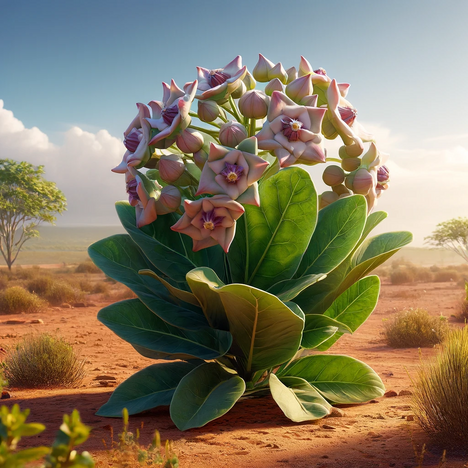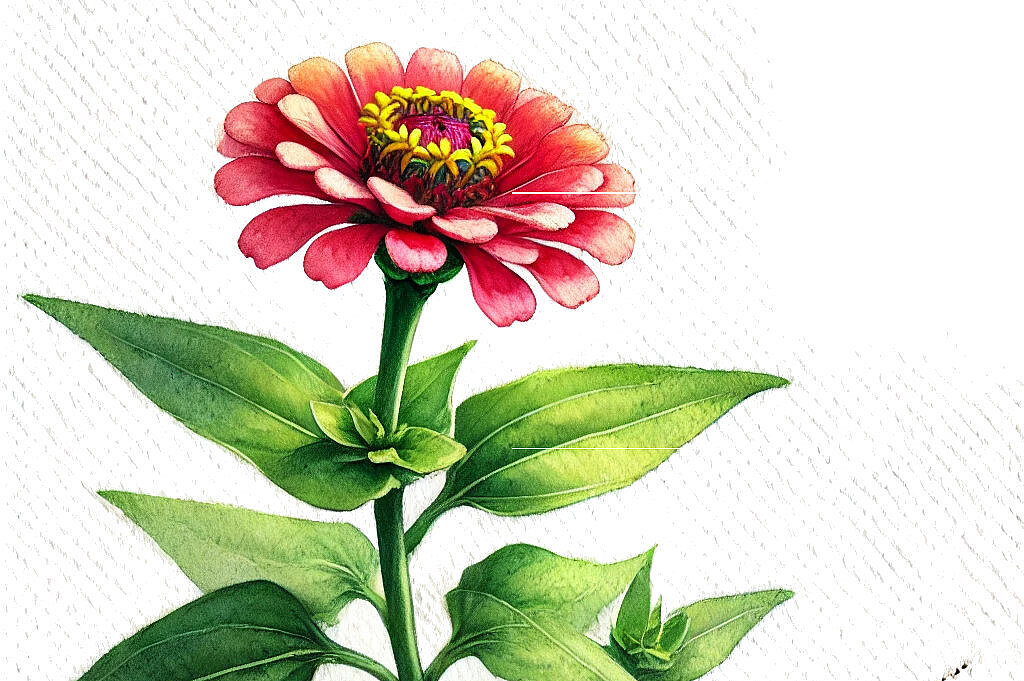Crown flower

Crownflower, known by its scientific name Calotropis gigantea, is a plant that attracts attention for its impressive appearance and versatile use in traditional medicine as well as various cultural practices. But behind its beauty lies a potential danger to pets, especially dogs, who have a tendency to explore everything they can find. In this article, we dive deep into the world of crownflower to explore its properties, potential benefits and risks, with a particular focus on its significance for dogs.
What is the crown flower (Calotropis gigantea)?
Calotropis gigantea, often referred to simply as crown flower, is a fast-growing, bushy plant native to the tropical and subtropical regions of Asia and Africa. The plant can grow up to several meters in height and is characterized by large, green leaves and eye-catching, white or lavender flowers arranged in dense clusters. The crownflower is not only known for its striking appearance, but also for its milky sap, which contains a variety of alkaloids and other chemical compounds that can have both medicinal and toxic properties.
Benefits of the crownflower
Traditional medicine
In traditional medicine, Calotropis gigantea has long been valued for its antiseptic, anti-inflammatory and pain-relieving properties. Extracts of the plant are used to treat various ailments such as skin diseases, digestive disorders and even as part of pain treatments.
Ecological importance
The plant plays an important role in its natural ecosystem by providing habitat and food for a variety of insects. It is also valued for its robustness and fast growth for soil improvement and in agroforestry.
Disadvantages and potential risks for dogs
Toxicity
The biggest concern associated with Calotropis gigantea and dogs is its toxicity. All parts of the plant, especially the white latex, are poisonous and can cause serious health problems if ingested or in contact with the skin. Symptoms of poisoning can include vomiting, diarrhea, increased salivation, lethargy and, in severe cases, respiratory distress.
Skin and eye irritation
Contact with the milky sap of the plant can cause skin and eye irritation in dogs. Sensitive areas in particular, such as the eyes, can suffer severe inflammation on contact with the sap.
Danger due to curiosity
Dogs that tend to explore their surroundings and chew on all sorts of things are particularly at risk. The dog's curiosity can lead it to eat parts of the plant or come into contact with it, which can lead to the health problems mentioned above.
Enjoy beauty with caution
While the crownflower (Calotropis gigantea) plays an important role in human culture and medicine, caution must be exercised when it is present in environments with dogs. The potential health risks it poses to our four-legged friends make it necessary to take measures to ensure that dogs do not have access to this plant. If you cultivate Calotropis gigantea in your garden or live near such an area, it is important to monitor your dog and take steps to avoid exposure. In the event of suspected poisoning, immediate veterinary attention is required. Crownflower can be an asset to biodiversity and traditional medicine, but your dog's safety should always take priority.
If you notice any signs of hypersensitivity or poisoning in your dog, you should see your vet immediately. We are not a substitute for a vet, but we try to be as accurate as possible. Every dog reacts differently and we recommend you get a second opinion or consult your vet if in doubt.
Stay healthy and take good care of your four-legged friend!😊
Similar to Crown flower
Snapdragons belong to the Plantaginaceae family and come in a variety of colors, from soft pastels to bright primary colors. These plants are popular not only for their appearance, but also for their...
Petunias are among the most popular flowers for summer beds, balcony boxes and hanging baskets. They originate from South America and belong to the nightshade family (Solanaceae), which also...
Zinnias belong to the Asteraceae family and are known for their vibrant colors and variety of flower shapes. Originally from Mexico, they have established themselves as popular ornamental plants in...



